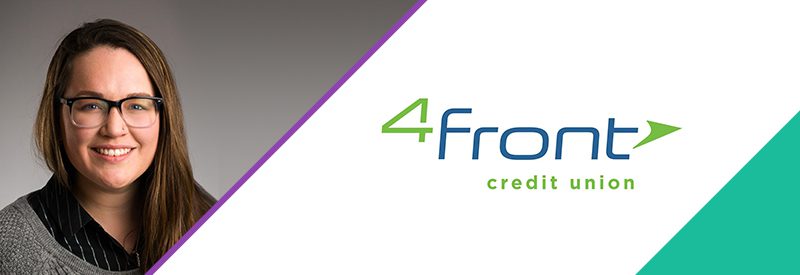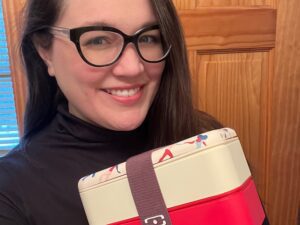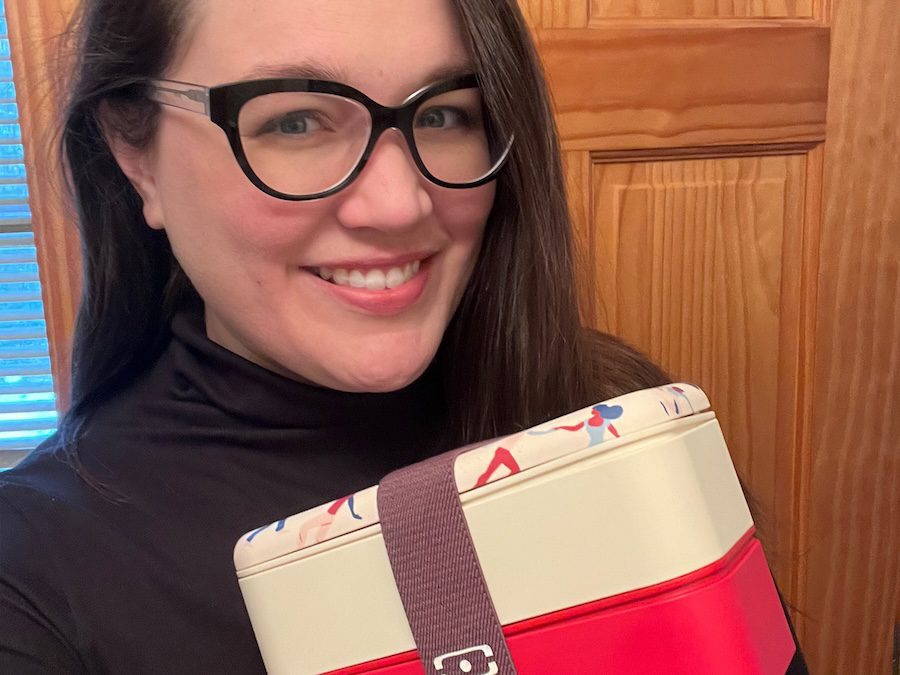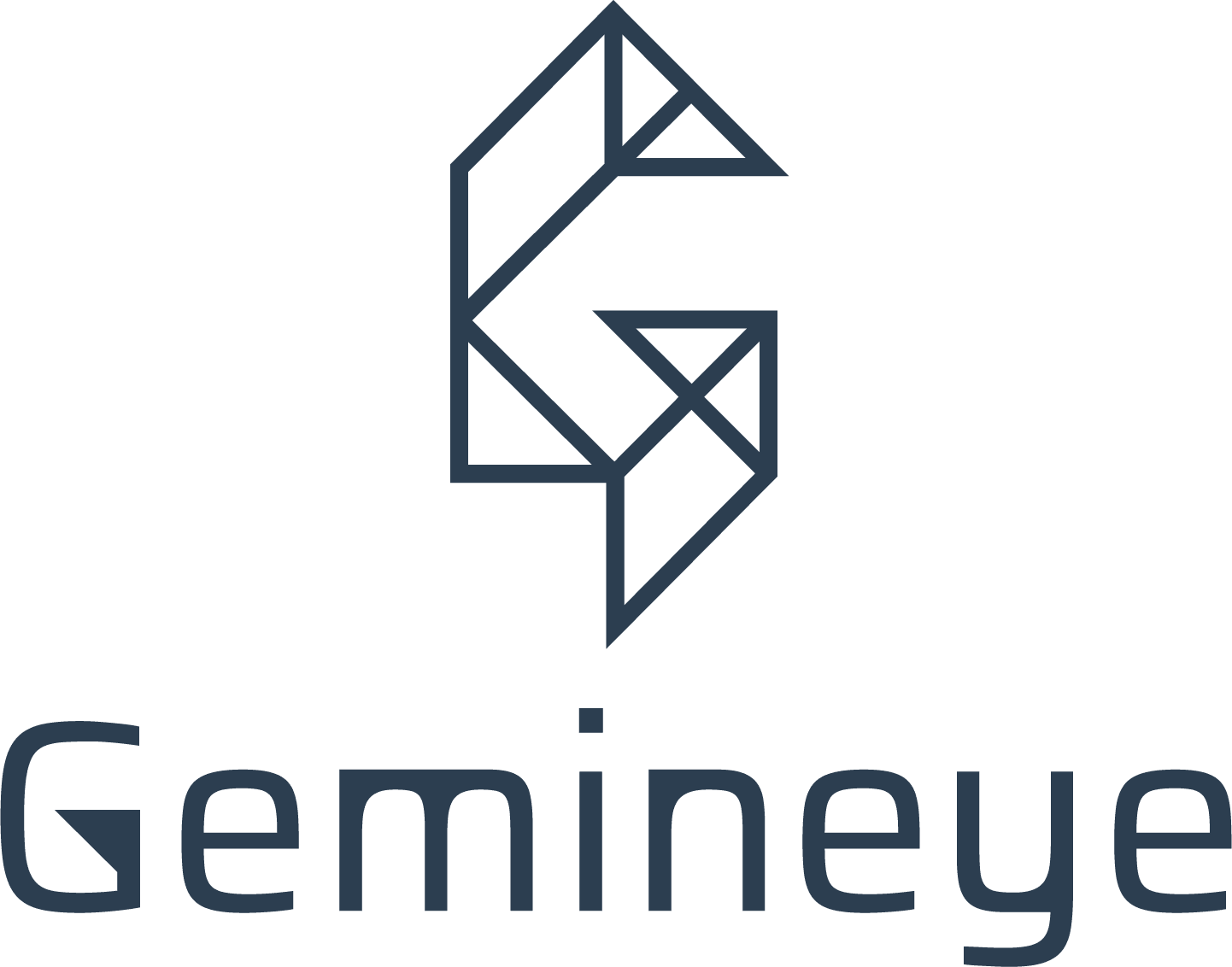
Welcome to our very first edition of “A Day in the Life of a Data Analyst,” featuring the equally talented and down-to-earth Ann Ditlow, Data Analyst at 4Front CU. Ann is a terrific example of female leadership in the male-dominated data analytics field and we are thrilled to learn about her goals, motivations, and daily habits.
We started this series because so little is known about what data analysts in credit unions and community banks actually do. We want to explore how their roles differ from one organization to another and examine their similarities and differences with our readership. We hope these interviews help our readers recognize their own organizational nuances and find comradery with their fellow data analysts.
4Front CU is a $1.1B organization based in Traverse City with 20 branches across northern Michigan. New mom Ann Ditlow is one of four analysts who report to the CFO. Interviewed by Alicia Disantis, Brand Consultant at Gemineye, she chats with us about strategic projects, investigative work, and her love of bento boxes.

How it All Started
Alicia Disantis: What we originally got you interested in data analytics as a career path, particularly within the credit union industry?
Ann Ditlow: My interest in credit unions and the data analytics space happened organically. My career has taken some pretty wild turns. I started right out of college in biotechnology where I was a bench lab scientist. I then moved into employee benefits. I did some sales at some point. I did software development in the context of an employee benefits company and now I’m doing data and financial analytics in a financial institution at a credit union.
When I say all these things, they seem like wildly different spaces and different tasks. But when you think about the commonality among all of them, it’s all math. It’s all data. Numbers are just another way to tell a story, and I really like that storytelling capability of data. What I love about the credit union space is this: every time you spend money, earn money, or think about major life events – getting a loan for a house or even the small things like using your debit card at Taco Bell at 1:00 AM – the data is at my fingertips. I have over 100,000 members’ entire lives moving through data points on the screen and I think that’s so cool. I love looking into things and asking questions and understanding “why,” and for the naturally curious, data analytics within a credit union is a wonderful place to be.
Being Female in A Male-Dominated Space
Alicia: I think a lot of people would be curious to get your take on being a female, a minority within the data analytics space.
Ann: I’ve read some articles about being a woman in a male-dominated space, like everyone thinks that you’re incompetent or this or that because you’re female. And I don’t think I’ve ever really had that. Or if I did, I never really noticed it, but I don’t think I’ve ever been viewed as or treated as lesser for being female. Especially here at 4Front, I think I’m absolutely equal among my colleagues and I feel like I’m treated with respect.
There are challenges to just being female in this space in general. It really came to a head last year. I’m a brand new mom with an 8-month-old kid and I never really had to think about things like, “Alright, I have to plan my entire year around this.” There’s something physiological going on because of my body being a female. You know, pregnancy, birth, postpartum – how is that going to affect this project that I’m working on? And who’s going help take care of everything when I’m gone?
And then you might feel a little bit of guilt. “Here I am taking three or four months off in the middle of busy season.” And then you’re feeling bad about yourself for feeling any guilt. There’s a lot of emotions and physiological stressors that my male colleagues may not be able to empathize that well with. Not having a group of people around me all the time that can’t really empathize 100% or really get what I’m going through is probably the hardest part. But when you do find a woman in the space, it’s instant mentorship and friendship, like “I get you.”
Alicia: What you said about motherhood and being a professional, it makes me think of all the studies that came out during the pandemic around the extremely unbalanced burden that women faced with working from home. How so many professional women dropped out of the workforce during that time, and many of them have not returned. All those different facets of what it means to be a female in a domestic environment, it isn’t anyone’s fault. I think it goes back to caveman time; we’re trying to change more quickly than our DNA is capable of.
Ann: There’s the technology around us is growing far, far quicker than all the organic bits behind the wheel, driving it all.
Alicia: What is something you wish you knew about having a career in data before you started?
Ann: I thought about this question for a long time. For whatever reason, because I had always been one of those people that I never quite knew what I wanted to do, because nothing really ever felt right. When I was a kid, I was just like, “I wanna be a doctor. I wanna be a scientist.” It was all kind of around that science-y technology, and math space. Then I realized that data is one of those cool careers. It’s a viable career path no matter where you go, no matter what industry you’re in. All these skills are transferable.
If you can do math, if you can think critically, if you can communicate clearly and effectively with somebody, you can do data analytics at a pharmaceutical company, a credit union, a marketing company, a giant retailer, or the government. I really wish that I knew because all the different tools that you have in the toolbox are pretty much the same no matter where you go. Numbers all work the same. The math works the same, so don’t get so hung up on what industry you’re supposed to be or feel like you’re supposed to be in. Just get into that data analytics role whenever it’s available and those skills will absolutely transfer. Keeping my mind open ended up with me in a credit union. I love the industry.
Alicia: Walk us through a day in your life as an analyst.
Ann: And I should probably start with the disclaimer that not all days of the same. And actually, most of them are not the same. There’s a routine in the morning and at the end that’s more or less the same day to day. But when it comes to the projects, it’s very different.
At 4Front, our analytics department is also our finance department. We’re doing interest rate risk, budgeting, and forecasting, but we’re also the primary analysts for any kind of business intelligence functions. We’re building dashboards, we’re putting out interactive data visualizations in PowerBI.
Karl Pagel is my direct supervisor and the CFO. I have three other colleagues and their names are Corbin, Blake and Ben. I love all of them to death. I would get hit by a bus for them. They’re like my brothers and we fight like siblings too, in a very jokingly-kind of way.
Rise and Shine with the Baby
And I’ll start right from the beginning. I get up usually whichever comes first, my daughter gets me up wanting food or around 6:30am. Roll the dice – we’ll see how she’s feeling. I know some people say that infants get a schedule. Evelyn has not figured that out yet. I get her fed, get her ready, get her cleaned up; it’s the mad rush. She usually either goes to a relative of mine, or we have a part time daycare situation. My husband’s getting ready for work. He works from home so he helps me with all of my multiple laptops and backpacks. For the Michigan weather, you never know if you’re going to need snow boots or sunglasses or several different kinds of parkas.
Also, I’m into making Bento boxes. I will put all kinds of vegetables and meats and things that you probably shouldn’t microwave to cook them. And I just do it because I like to roll dice and live dangerously.
Alicia: Are we talking bologna or something?
Ann: Yeah, I’ll microwave whatever. I’ll microwave metal. I just stick a fork in there and go.
It turned out that the key for me to eating a healthy lunch and actually sticking to it and not going down the street to Traverse City to get a delicious sandwich for $25 or something, is to put it in a cute container. I didn’t know that psychological part of me, but there it is.
Alicia: There it is. We don’t need an answer.
Morning: Go Through Those Emails
Ann: I have a decently long commute, about thirtyish minutes. First thing I do when I get in, I’m looking at my emails. There are two kinds of people with emails, and I’m one of them who can’t have any unread. If I don’t address each one, I can’t relax in the morning. Corbin, on the other hand, is totally fine with 1,000 unread emails and I do not know how he lives, how he handles it.
Do I do respond right then? Is it important to answer? Do I delegate or see if it’s a better fit for someone else in my department? Do I delay it? Is it something that I can do like Tuesday, Wednesday, Thursday – later on this week?
Late Morning: Organizing Projects and Analyzing Numbers
At that point I’m usually talking to Corbin, Ben, and Blake, and we’re collectively organizing our projects. We’ve got X thing that needs to get out on a wide date for specific examples. This is the first day of the month and we know that on the first day of the month, you know we have the that data cut. We can run all our prebuilt reports that we have and analyze our indirect auto loan portfolio or our deposits – “set it and forget it” types of reports you just hit it and go.
We’ll split these tasks up among us and compare to the last period, looking at the numbers and identifying insights for different executives, branch managers, and regional branch managers. Do we see anything that’s weird or interesting or different about these? And sometimes the difference is so big, as an example – business checking deposits decreased by $8 million month over month, I try to understand where these changes came from.
Sometimes it’s like one big client that remitted taxes to somebody, other times – and we’ve seen this just in in the general in the credit union space – those non-maturity deposits are just going down as inflation is rising as people are spending more. I ask myself, “I see this happening, but I know that the next question that’s going to arise out of this answer. Is there’s a bigger story here to share?” It’s a combination of math, preparing reports, and then having your head on a swivel and being open to a schedule change right in the middle of the day.
Now is when the espresso really starts to hit, and I start getting a little bit more caffeinated. Now I can have meetings. I like to schedule my meetings to get requirements or explain results late morning, right before lunch. For example, we had a meeting with our Chief Innovation Officer and we were discussing our progress on Gemineye data sets ingesting into our data warehouse. We ask, “What are some other data sets that we have? What are some things that we want to pull from?”
Sometimes I present different projects that I’m working on, like there’s a noticeable difference in our member XP scores at this branch. “What is going on there? Or hey, I’ve noticed that there’s an uptick in the number of NSFs recently month over month.”
Alicia: Like detective work. I didn’t realize there were so many questions.
Ann: I find myself constantly reviewing, rereading, and going over my work before I send it to make sure that I understand it. I’m on the frontline of understanding why this is happening and I’ve had to learn to say, “I don’t know” a lot. I used to be uncomfortable saying that, but now it’s turned into a more positive experience.


Alicia: It’s time to microwave some metal.
Ann: Let’s microwave some metal. Although the Bento box containers I have…I can’t believe I’m talking to you about this…they are actually microwave-safe material. They have this little plug that you can open up on the top. I can send you a picture. I have a nice Bento lunch, usually accompanied by some form of sparkling water.
Post-Lunch: Deep Diving
Now I move into the afternoon and I like to do solo, deep work for a strategic goal, future product, or a new analysis. I have been building a report – or really it’s more like some horrible monstrosity of a calculator. What it does is predict future cash flows from the members based on their behavior, and I could go into it for hours on how I did that and what I did with it.
Alicia: What’s a strategic endeavor that you’ve accomplished recently?
Ann: At 4Front, we have a rather sizable auto loan portfolio and it’s due to the size and the number of our relationships that we have with indirect auto leaders. This is common across the credit union industry, but generally we have a larger part making up our overall loan portfolio at our institution. We may have a new member of the credit union that may not have necessarily walked into a branch before, doesn’t have a checking account with us, doesn’t have any kind of relationship with 4Front other than just making that payment for that car that they bought at the dealership. They might not even be in northern Michigan, so they’re probably never going to interact or have us as their primary financial institution. We need to have a number that allows our executives and leadership to understand that organic membership growth.
Are we growing in members who are just getting auto loans and then are they leaving every couple of years when they get a new car, or are we actually building and creating significant relationships with people in our community? It’s easy to look at that member number and see it going up and think we are doing great. Well, are we really, though? Of course this organic member identification project created opportunities for many jokes like, “Oh, is it a cage free USA organic certified member?”
Alicia: Right, non GMO.
Ann: Once we identify what it means to be an organic member, we then translate it into an actual set of data requirements. All those data requirements had to get teased out in the beginning, and then you have to move into the building stage of the report where you really understand the structure that you’re pulling from. We then can build a scorecard dashboard metric and communicate that information across the organization, breaking it down by branch.
Late Afternoon: Status Updates and Prioritization
Alicia: Is there anything specific you do at the end of your workday to wrap up?
Ann: Yeah, usually if there’s a status update that we need to do with Karl (CFO), we’ll do it at the end of the day. We just give a quick overview of all the things that are in flight. Sometimes we’ll get assigned new work, but usually we just go around the table and discuss what we are working on. We typically talk about anything interesting that we found in our earlier reports in the morning, or any roadblocks that we’re having in some of our deeper work in the afternoon.
It’s a lot of prioritization at the end of the day. It’s a nice closure -wrapping it up and feeling done to the end of the day.



